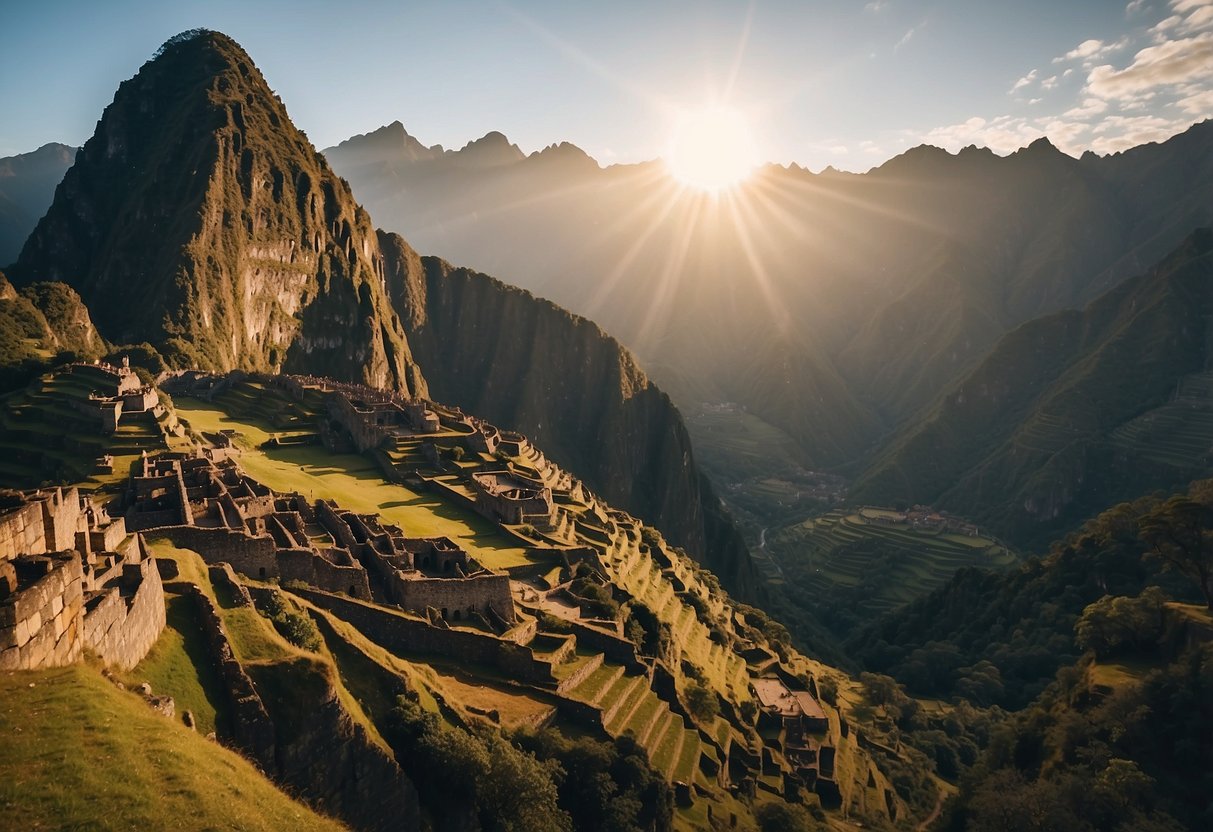
Geography and Location
Machu Picchu, a UNESCO World Heritage Site, is nestled high in the rugged terrain of the Andes Mountains. Its unique location offers breathtaking views and a rich historical backdrop that attracts millions of visitors each year.
The Andes Mountains
Machu Picchu is situated at an altitude of approximately 2,430 meters (7,970 feet) above sea level. The Andes Mountains, the longest continental mountain range in the world, provide a dramatic and picturesque setting that enhances its allure.
The site’s elevation and mountainous terrain contribute significantly to its preservation and mystique. It is surrounded by steep cliffs and lush greenery, capturing the incredible biodiversity of the region.
The journey to Machu Picchu often starts in Cusco, the ancient capital of the Inca Empire, which is located about 80 kilometers (50 miles) away. Travelers must navigate through a series of valleys and passes, each offering unique views and experiences.
Vilcanota Valley Proximity
Machu Picchu is located in close proximity to the Vilcanota Valley, also known as the Sacred Valley of the Incas, which is traversed by the Urubamba River. This valley is recognized for its fertile soils and agricultural significance.
The Sacred Valley’s lower altitude compared to the high peaks of the Andes creates a unique microclimate that supports a variety of crops, historically vital to the Inca civilization. The river also plays a critical part in the ecosystem, contributing to the lush green landscapes surrounding Machu Picchu.
Access to the site is often facilitated through Aguas Calientes, a small town positioned at the base of Machu Picchu, which serves as the primary gateway for tourists. This proximity to both the Sacred Valley and Aguas Calientes makes it relatively accessible despite its remote mountain setting.
Architecture and Engineering
Machu Picchu showcases the advanced architecture and engineering of the Inca civilization, with its remarkable structures, sophisticated terraces, and innovative water systems. These features highlight the Incas’ ingenuity and mastery of their environment.
Structural Marvel of the Incas
Machu Picchu is home to several notable structures that reflect the Incas’ architectural prowess. The Temple of the Sun, with its curved stone walls and strategic alignment with key astronomical events, is a key highlight. Nearby, the Temple of the Three Windows opens onto a scenic view, believed to symbolize the Incan trilogy of the three realms: the heavens, the earth, and the underworld.
Another significant feature is the Intihuatana Stone, a ritual stone associated with astronomical observations. Positioned to mark the solstices, it showcases the Incas’ advanced understanding of celestial events. Masterfully constructed structures with precisely cut stones fit together without mortar, demonstrating the engineering skills the Incas possessed.
Innovative Terraces and Water Systems
The terraces at Machu Picchu are a testament to Incan ingenuity, designed to prevent erosion and maximize agricultural productivity. These terraces also managed water distribution effectively, ensuring sustainable farming in steep and rugged conditions. The layout of the terraces exemplifies a deep knowledge of landscape management and soil conservation.
Machu Picchu’s water system includes aqueducts and fountains that supplied fresh water to inhabitants. Ingeniously designed, these systems utilized gravity for the efficient distribution of water across the site. The use of stone channels and reservoirs illustrates the technical sophistication of the Inca engineers, ensuring a reliable water source for the entire settlement.
Each aspect of Machu Picchu’s architecture and engineering reflects a sophisticated understanding of construction, agriculture, and hydraulics, showcasing the ingenuity and skill of the Inca civilization.